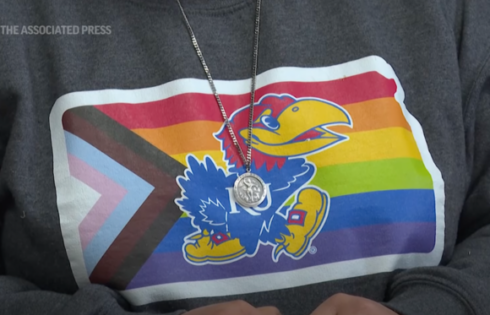
It makes no sense and it is ultimately unhelpful
A great many higher-ed authorities are singularly obsessed with racial issues, to the point that they feel it necessary to interject themselves between, and mediate the relationships of, students of different races who would otherwise have no trouble getting along. But quite apart from needlessly complicating the interracial friendships of young men and women on campus, academics often seem devoted to helping students self-segregate themselves along racial lines. No good will come of it.
Kent State University, for example, offers “a peer-mentoring program that pairs freshmen of color with upperclassmen to help the incoming students ‘feel culturally affirmed.'” A number of universities offer racially segregated activities of various kinds: discussion groups, town hall-style meetings, workshops and other gatherings are often divided by the skin color of the participants. California State University last year offered segregated housing for black students. The list goes on.
These efforts are ostensibly well-meaning: the point is to gather similar students in one place so that they might bond over their similarities and offer each other community and support. But this sentiment ultimately rings hollow upon closer examination: skin color, after all, is the shallowest and most irrelevant similarity of all, a mere pigmentation that ultimately has nothing to do with the essence of one’s being. It might be argued that skin color is irrelevant, while the social effects of skin color offer a more justifiable excuse for racially segregated bonding. But this excuse can really only take you so far: the whole point of a university, after all, is to break one out of one’s own narrow-minded bubble into a wider and more interesting world. To box oneself into a social network on the most tenuous and ultimately irrelevant of pretexts contravenes the entire justification for higher education.
Student activists like to counter with a rather unbelievable claim: that universities and colleges are overwhelmingly hostile to racial minorities, and so they must self-segregate in order to protect themselves (“feel safe,” in the current student parlance). This is a rather flatly preposterous proposal: visit virtually any campus in America today and you will find an environment wholly welcoming and inclusive of all races and ethnicities. The idea that non-white students need a “sanctuary” on campus, as happened this past spring at American University, is an exercise in liberal student vanity, nothing more.
In the end it is silly and arguably pointless for students to balkanize themselves based on superficial qualities like skin color. Universities, of course, can’t stop students from doing so on their own, nor should they. But they can at least stop actively promoting such segregation, tacitly encouraging students to stop looking at each other as racial creatures and instead start looking at each other in more relevant and constructive contexts.
MORE: UChicago considers student demand for segregated orientation
MORE: UMich students demand no-whites-allowed space to plot ‘social justice’ activism
Like The College Fix on Facebook / Follow us on Twitter
IMAGE: Shutterstock






Please join the conversation about our stories on Facebook, Twitter, Instagram, Reddit, MeWe, Rumble, Gab, Minds and Gettr.